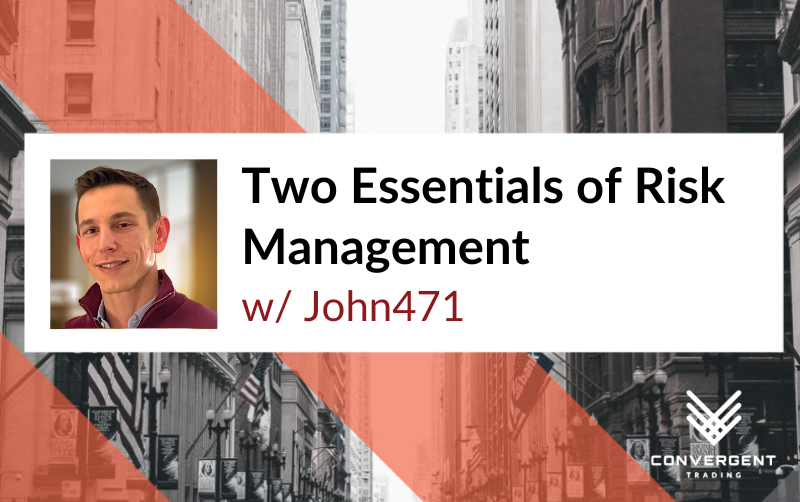Two Essentials of Risk Management w/ John471
You will often here online traders mention risk management, risk control, or being a good risk manager, etc., but what exactly do they mean, and how can a trader be a good ‘risk manager’?
Let me start off by mentioning a few criteria that are not good examples of risk management. Unsurprisingly this would include any decision or act that increases your risk beyond what is allowed in your plan. For example, your DLL is $500, and you hit it, but continue to trade, thus increasing the potential risk to your account beyond the specified limit.
However, it is also very important to note, acting in an unnecessarily risk adverse way is also poor risk management, for this truncates your potential return which can negatively impact your results just as
When do I take a day off on a losing streak? much as erroneous losses. This includes behavior that would be described as “avoiding the loss,” sometimes trading too small, scratching, or ceasing to trade with a small profit, etc.
Ok then, so what is good risk management? A great deal of good risk management can be boiled down to two things:
- Having a detailed risk plan
- Having a strict and unconscious discipline to execute the risk plan
We will discuss each further.
When I say a detailed risk plan, I am being specific, but there is no need for this to be any more detailed than necessary. What level of detail is necessary? The plan must answer every known question that may arise during your execution hours pertaining to your ability to take risk.
This includes clear and obvious criteria like your loss limit per day, week, or trade, but also needs to include the less clear decisions that come up.
Here are some questions to ask yourself:
– What’s your default trade size and when can this be adjusted up or down? Does management change?
– Who enforces my DLL? Is it possible for me to have a broker shutoff? Can I also implement one at the trader level through my own software?
– Can you add to trades? Can you add more than once? How is management affected with an add? Can only the add get stopped out?
– Do I have mandated breaks? What if I’m on a win streak? What if I haven’t traded yet?
– What are my rules around winning or losing streaks? When do I take a day off on a losing streak?
– Do I regressively size if I’m down? When do I refund my account on a drawdown?
– How do I manage runners?
– Any other question that has arisen or may arise over the course of your trading that affects the risk to your trading business and account.
We know that emotions arise during trading, and we know emotions can impact trading, so the goal here is to have all the important decisions about your risk plan made ahead of time, with a clear head. Waiting until you’re in the heat of battle to decide the details of your risk plan leaves you error prone at best, and potentially spiraling into DLL at worst.
“We know that emotions arise during trading, and we know emotions can impact trading, so the goal here is to have all the important decisions about your risk plan made ahead of time, with a clear head.“
– John471
Now, what does it mean for this plan to have strict and unconscious discipline to execute on every decision, or filter every decision? It means that first, you are aware of your risk plan, or have it close at hand. Second, it means you can interpret it in every situation. Third and most importantly, it means that you adhere to it without question during your execution hours. Any potential changes or amendments always come afterwards, during your debrief and review, and it really should not happen much after your plan is solidified and launched live.
I want to emphasize here in case it’s necessary that none of this is to imply that you should focus on your PnL, losses, or anything of that nature. That is not what I mean by filtering each decision. It’s more of a quick, often unconscious check. If you are at a red light and the car in front of you starts to roll forward, it’s very likely you may quickly, unconsciously glance up to make sure the light turns green, this is just being conscientious. However, it’s quite unnecessary and probably dangerous to continue to stare at the light, making sure it’s still green as you drive forward and underneath it through the intersection. This is the essence of what I am talking about.
In summary, successful risk management is not about eliminating all risks or obsessing over every potential outcome, but about having a well-defined plan and the unwavering discipline to stick to it. It’s about preparing for every scenario with clarity and confidence, allowing you to navigate the market with precision and poise. The market will always present uncertainties, but with a solid risk management framework in place, you can face those challenges head-on, making calculated decisions rather than impulsive reactions. Remember, consistency in applying your plan is key—your ability to manage risk effectively will ultimately determine your long-term success as a trader.
John471
CT Maven

